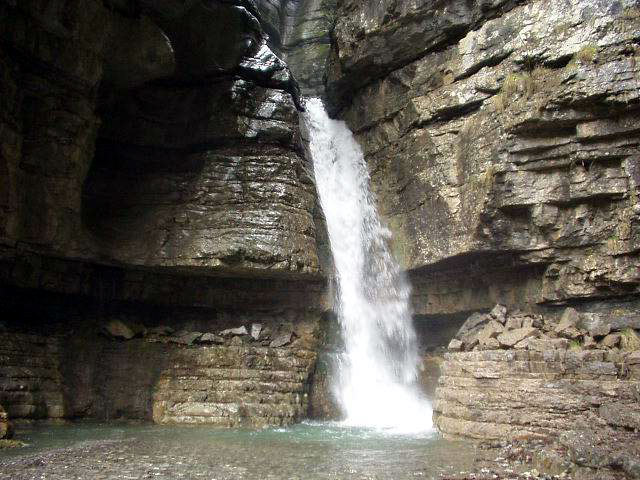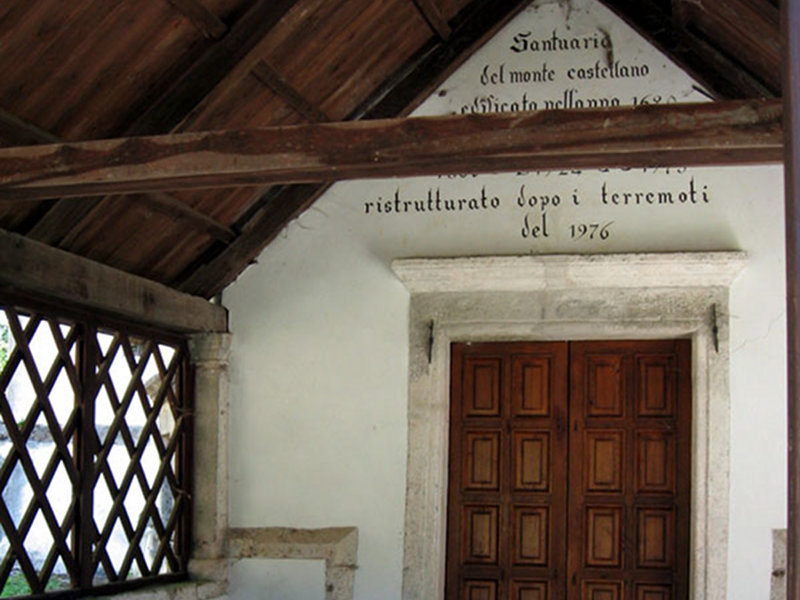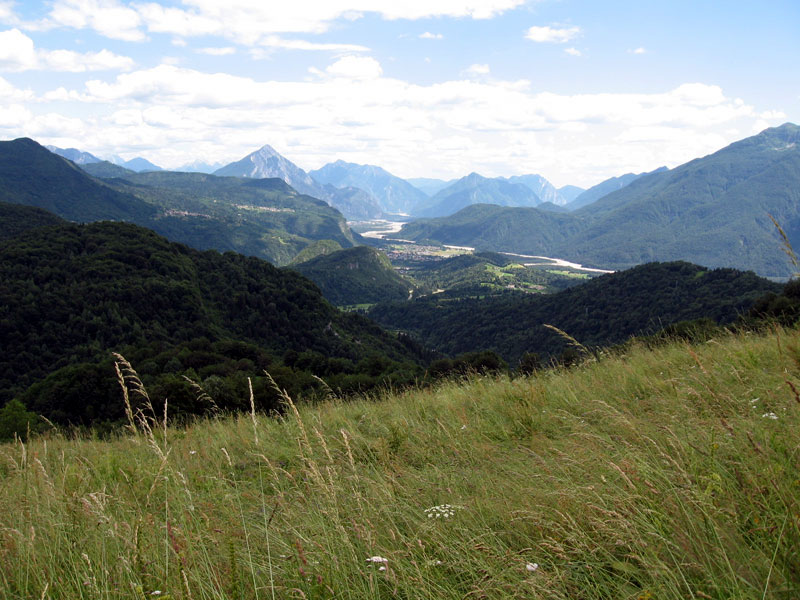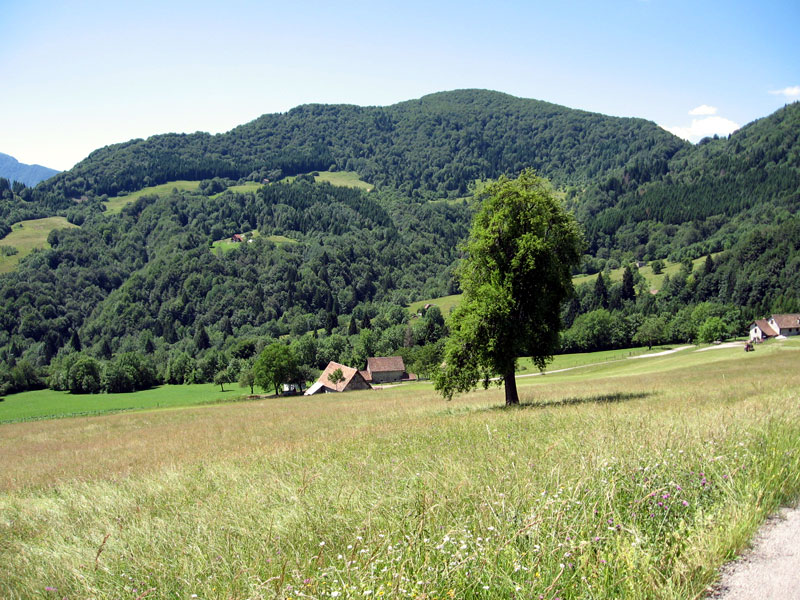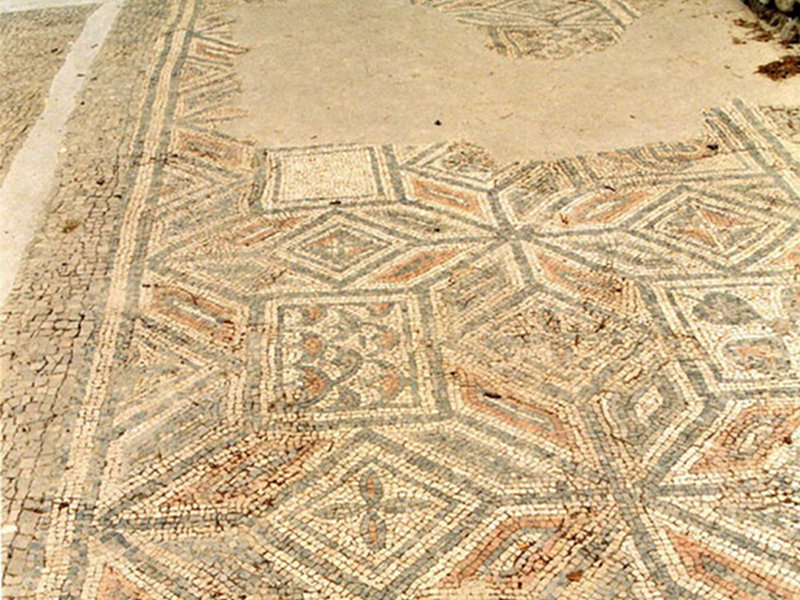Points of Interest
Forra del Vinadia
One of the most charming natural settings of the Alps, shaped by the
millenary water flowing of the stream Vinadia and its main affluents,
Picchions and Chiantone.
Immediately under the town of Vinaio,
Vinadia Canyon begins: it is one of the most particular and imposing
natural monuments of Carnia, best known with the name of "Forra del
Vinadia".
It develops for about 5 km in a narrow and very deep ravine reaching
the Municipality of Villa Santina; out of them, 3.5 km flow in a
spectacular gorge.
This ravine, whose walls almost reach 200 meters of height and which in
some points are just a few meters far one from the other, represents
one of the most considerable examples of river erosion in the Alps,
giving origin to unique lithologic variations.
For nature-lovers and experts, the emotions are guaranteed. The
itinerary is characterized by a series of waterfalls, small lakes, and
imposing rocky walls so high and close one to the other that in some
points you cannot even see the sky.
Madonna di Raveo Sanctuary
Built in 1619 where an ancient small church dedicated to the Virgin
Mary's Motherhood rose, is known as a place where the Virgin Mary
appeared (a common origin of many sanctuaries dedicated to the Virgin
Mary). It is situated along an ancient trail leading to the hay harvest
places in Valdie and has always been considered a privileged place to
stop and prey.
The sanctuary was known as a place of extra-local
devotion, since it was a destination for the pilgrims attracted by its
miraculous properties (resurrection of non-christened babies), like the
sanctuary of Madonna di Trava.
Behind the church there is the former Franciscan hermitage of Mt.
Castellano (17th century), which is today a private property; for this
reason, entrance is not allowed, except on particular occasions.
Conca di Valdie (810m) and Stavoli di Pani (990m)
An enchanted place of extraordinary environmental value, it is the only
area in the Region to be an example of ancient steady settlement at
almost 1,000 m of altitude, formed by characteristic stone buildings
(the so-called "stavoli") scattered throughout the meadows of the
plateau and still partly used during the summer mountain grazing
activities.
From Prati di Pani you will enjoy an amazing view over the river Tagliamento running down to the valley.
Villa Santina Pinewood
Despite its great environmental value, this area in not very known. It
was also described at the beginning of the century by Michele Gortani:
"In the area of the Pine Wood it is frequent to see trees of the two
resinous species growing together: Spruce Fir and Scots Pine; except in
the westernmost section, near T. Degano, dominated by Scots Pine.
Within it, but only in some limited areas, there are pure Fir woods or
only Pines; sometimes the two main arboreal species grow together with
groups of Acacia, Ash, or Manna Ash, more rarely with groups of Alders
or a few Lime trees, rarely Oaks and Poplars; almost never the Willows
reach over the meter of height.
Slight environmental changes are enough to create the conditions for
the development of undergrowth rich in flora, otherwise the floristic
species remain rather limited.
Fortunately, these changes are frequent, and depend on various factors:
natural clearings, the recent cutting of the older plants, the presence
of water canals, the clayey soil, the proximity to the bed of river
Tagliamento, etc... These conditions and the fact that the whole area
is crossed by paths and trails going in every direction enable a
considerable freedom of movement and an interesting floristic presence"
(G. De Prato, "la flora del Parco").
Plera Waterfall
The waterfall is surrounded by an environment characterized by luxuriant vegetation.
Although less imposing than Radime Waterfall, Plera Waterfall is of
great interest for its geological, naturalistic, and environmental
aspects. No doubt it deserves a visit to admire its foaming waters
roaring down among the rocks.
Until mid-70s, near the waterfall there was a spring of thermal water, today disappeared.
Col di Zuca
The archaeological excavations that have been carried out in recent
years have brought to light a cultural complex of the paleo-christian
period (5th century AD), which also developed in the early Middle Ages
until the 7th century AD. On Col Zuca there was an area where the local
population used to bury the dead.
The excavations have revealed the
rests of a rectangular-plan basilica with no apse: you can still
observe part of the pavement, decorated with mosaics.


